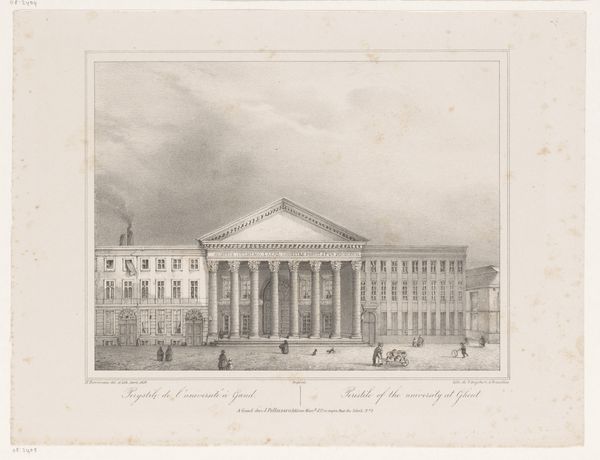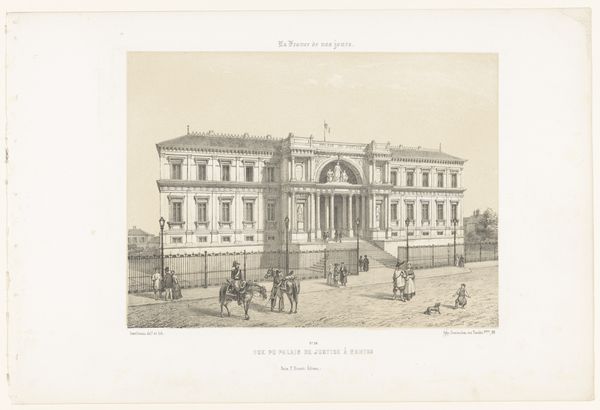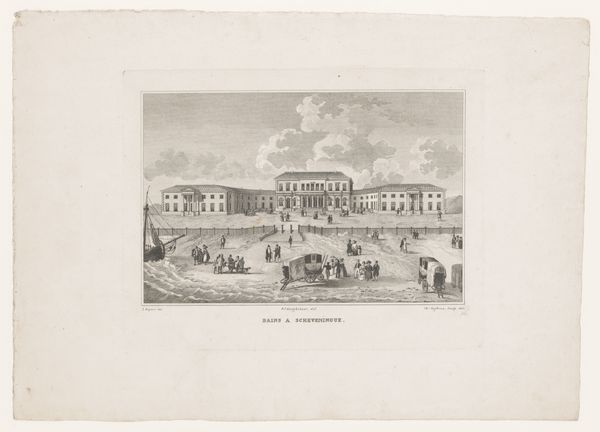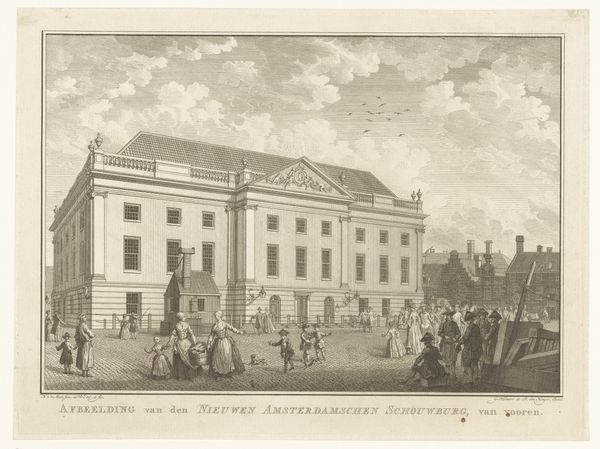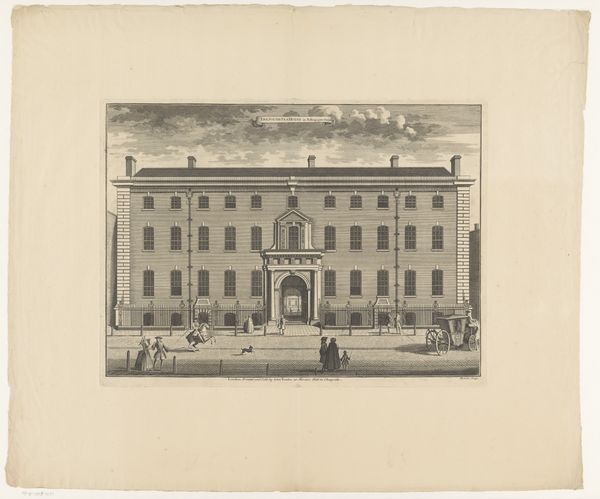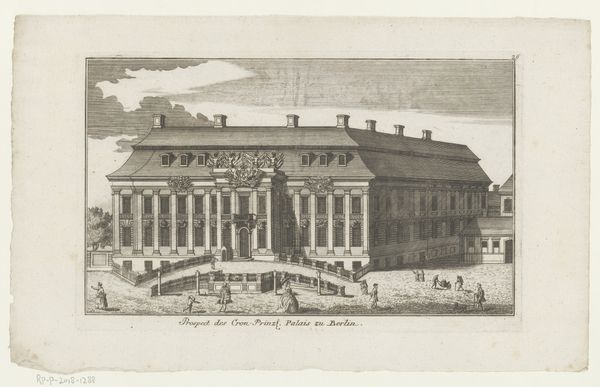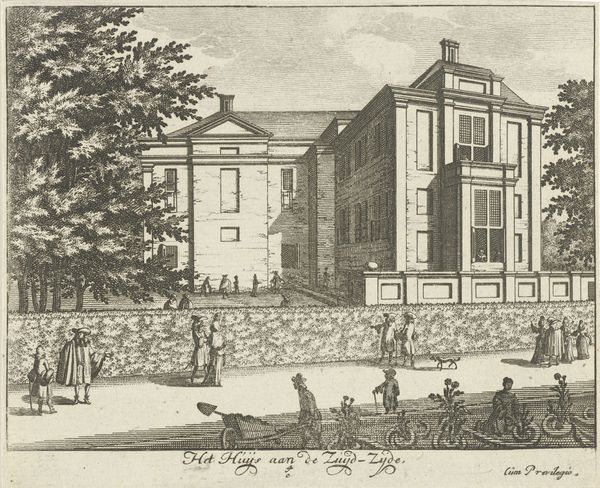
drawing, print, pencil
#
drawing
#
neoclacissism
# print
#
pencil sketch
#
landscape
#
pencil
#
19th century
#
cityscape
#
watercolour illustration
#
academic-art
#
watercolor
Dimensions: height 286 mm, width 399 mm
Copyright: Rijks Museum: Open Domain
Curator: This is a print titled "Academiegebouw te Groningen," dating from somewhere between 1850 and 1865. The anonymous artist employed pencil, watercolor, and printmaking techniques to render this architectural landscape. Editor: It feels incredibly… reserved. Almost austere. The muted colors and sharp lines give it a very formal, distant atmosphere. It makes me think about the concept of knowledge as power, access to it restricted, physically manifested here by the imposing building itself. Curator: Precisely. Think about the broader context: institutions of learning, especially universities, have historically served as gatekeepers. Who was allowed inside? Who was excluded? How does this representation, emphasizing structure and order, reinforce societal hierarchies? Consider the neo-classical style—its revival mirroring a desire to return to perceived ideals of rationalism and civic virtue during this era. Editor: And it's interesting that the figures populating the scene, almost incidental, seem segregated by class and perhaps gender. We see individuals on horseback—presumably members of the elite—while others stroll in groups or pairs. There's a distinct sense of formality to their dress and demeanor. They are not rioting or anything! Everything in its place. Curator: The figures provide scale and human interest, certainly. But I agree, they also underscore the power dynamics at play. This wasn’t just a building; it was a stage where social roles were performed and reinforced. Furthermore, the absence of explicit political imagery doesn't negate its political dimensions. What seems apolitical, like a mere architectural rendering, might perpetuate existing structures by normalizing them. Editor: Looking closer, I notice how meticulously detailed the facade is, down to the individual window panes. Yet the trees in the background are hazier, less defined. It really reinforces the idea that this building, and what it represents, is the primary focus, the only thing worth looking at. Curator: And the medium itself – a print – speaks to the burgeoning availability of images, disseminating these ideals and representations widely. It brings us back to how socio-political forces influence the reception and understanding of the work. Editor: I appreciate that this work offers a chance to unpack what seemingly simple depictions might mean in regard to culture and history. Curator: Agreed. It makes you wonder, who owned such prints, and how might their perspectives have shaped the narrative.
Comments
No comments
Be the first to comment and join the conversation on the ultimate creative platform.
